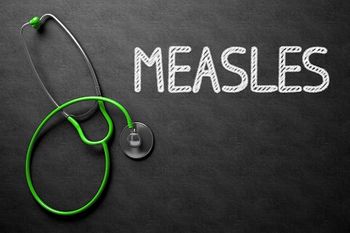
Don't Guess, Get The Test: Increased Testing Key to Stopping HIV Epidemic
Many individuals live with HIV for years before they are aware of their status. HIV testing is crucial if we hope to bring a close to the ongoing epidemic.
The Centers for Disease Control and Prevention (CDC) recently released some good news about HIV, a virus that affects an
According to a new Vital Signs report, the estimated median time from infection to diagnosis in 2011 was 3 years and 7 months; however, in 2015, that time was just 3 years. The CDC describes this as a “considerable decrease” that can be attributed to rigorous prevention efforts.
In a telebriefing on the new report, CDC director Brenda Fitzgerald, MD, stated that “annual HIV infections are down, a higher proportion of people living with HIV have been diagnosed, and there are more people who have the virus under control.” She stressed that despite the progress highlighted in the report, challenges remain. One of the biggest of these is that not enough individuals are getting tested in accordance with CDC recommendations.
Current recommendations state that everyone between the ages of 13 and 64 should get tested for the virus at least once in their lifetime, and individuals who are at increased risk of infection—such as African American men who have sex with men—should get tested annually.
“An HIV test opens doors to care, treatment, and prevention,” said Dr. Fitzgerald, while Jonathan, Mermin, MD, MPH, the director of CDC’s National Center for HIV/AIDS, Viral Hepatitis, STD, and TB Prevention added, “Testing for HIV is central to addressing [the epidemic] in the United States. A positive HIV test allows an individual to get the treatment they need in order to live longer, healthier lives. Testing also opens the door for preventive options for those who do not have HIV but are at risk. Don’t guess, get the test.”
The good news, according to the new report, is that the number of individuals at increased risk of infection who were tested in the previous year has increased. However, testing rates in some groups of individuals remain low. In fact, a recent study conducted throughout several cities in the United States found that 29% of gay and bisexual men, 42% of injection drug users, and 59% of heterosexuals—all at increased risk for HIV—did not get tested within the last year.
The issue does not seem to be a lack of access to health care. “Seven in 10 people at high risk (who were not tested for HIV in the past year) saw a health care provider during that time, signaling a missed opportunity,” said Dr. Mermin.
He went on to discuss the issue of time between infection and diagnosis. “Far too many people live with HIV for far too long before receiving a diagnosis.” In fact, a quarter of individuals who were diagnosed with the virus in 2015 had been living with the virus for approximately 7 years without knowing they were infected.
Without increased testing, individuals will continue to live unaware of their status, which will, in turn, delay them from receiving treatment, and increase the risk that they can transmit the virus to someone else. Without treatment, HIV can develop into AIDS and be fatal. With treatment, individuals can
The CDC officials also said that the time between infection and diagnosis varied for heterosexual males and women of all sexual orientations, as well as for groups of different races or ethnicities.
For example, the median time between infection and diagnosis was 5 years for heterosexual males and 2 and a half years for women. Dr. Mermin offered a possible explanation for this difference, stating, “Women appear more comfortable with the health care system, and thus, tend to go [to a doctor] more frequently. They are also screened for diseases when they’re pregnant.” Because of these reasons, they tend to receive diagnosis earlier.
Regarding the differences between races and ethnicities, the CDC reported that the time between infection and diagnosis for Asian Americans is an estimated median of 4 years, while the median time for African Americans and Latinos is estimated to be 3 years. White Americans showed a median of 2 years. Although an explanation was not offered on the call, previous reports postulate that these gaps are the result of the
“We must close the gap between HIV infection and diagnosis in order to end our nation’s epidemic,” Eugene McCray, MD, director of the CDC’s division of HIV/AIDS Prevention stressed. “CDC is working to make this happen through educating the public and health care providers on the epidemic.” By increasing HIV testing, the hope is that the treatment gaps can be closed, and the virus can be stopped throughout the country.
“HIV testing works,” he stressed. “Getting more HIV infections diagnosed, and more people receiving needed treatment is crucial [in the fight against HIV].”
Newsletter
Stay ahead of emerging infectious disease threats with expert insights and breaking research. Subscribe now to get updates delivered straight to your inbox.

































































































































































































































































































